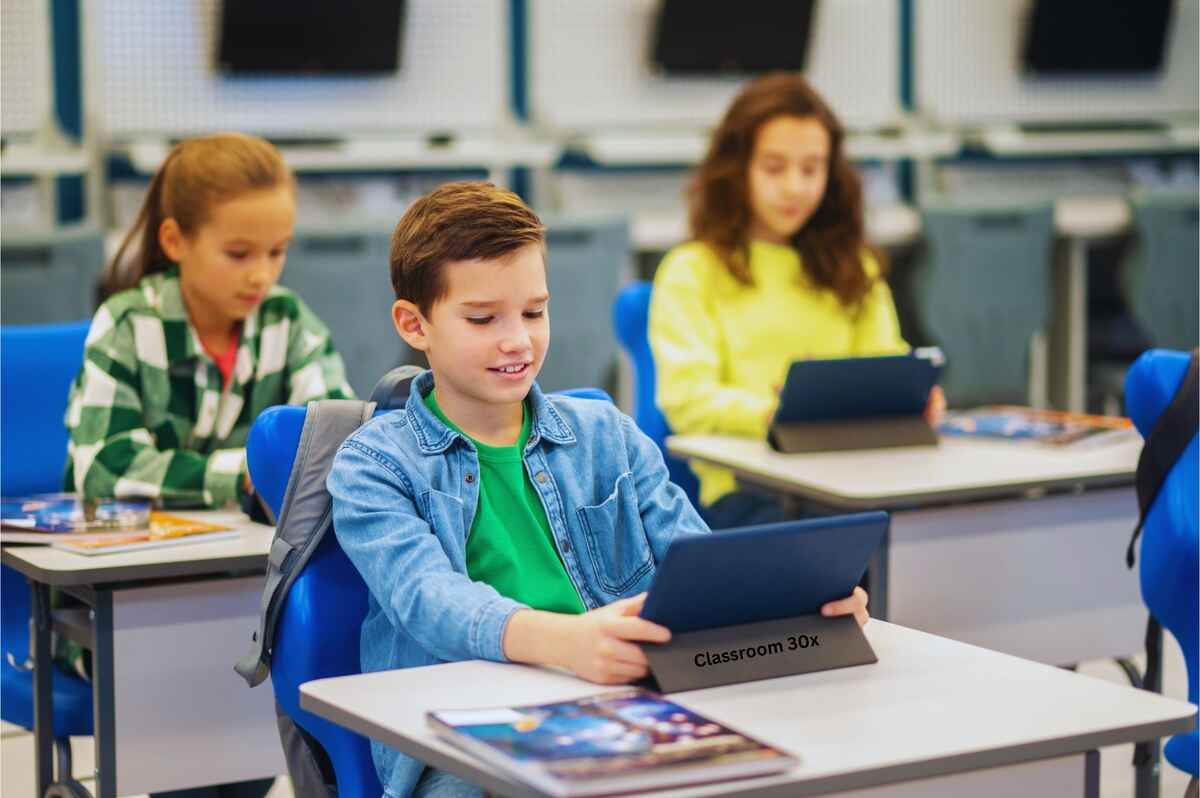What is Classroom 30x?
Classroom 30x is an innovative educational approach that aims to maximize learning potential within the classroom setting. Originating from a growing need to enhance student engagement and achievement, Classroom 30x integrates various methodologies designed to foster collaborative, inclusive, and effective learning environments. This concept is built upon principles that prioritize student-centered learning, where the focus shifts from traditional lecturing to more interactive and participatory teaching methods.
The core philosophy of Classroom 30x emphasizes the importance of adaptive teaching techniques, which cater to the diverse needs of students. By leveraging technology and the latest educational research, educators can create dynamic learning experiences that resonate with learners of all backgrounds. Techniques such as active learning, project-based assignments, and peer-to-peer collaboration are hallmarks of this approach, encouraging students to take ownership of their academic journey.
Within the Classroom 30x framework, teachers play a pivotal role as facilitators. They guide students through tailored experiences that encourage critical thinking, creativity, and problem-solving skills. For instance, in case studies where Classroom 30x has been effectively implemented, schools reported increased student motivation and improved academic performance. By incorporating real-world challenges into lesson plans, educators can make learning more relevant and accessible, thus fostering a deeper understanding of the subject matter.
An essential aspect of the Classroom 30x methodology is its emphasis on formative assessments. These assessments provide ongoing feedback, allowing both instructors and students to identify areas for improvement while celebrating achievements. This continuous cycle of evaluation and adjustment helps enhance the learning experience, making Classroom 30x a powerful tool in modern education.
Benefits of Implementing Classroom 30x
The implementation of classroom 30x brings forth a plethora of advantages for both educators and students, fundamentally transforming the learning ecosystem. One of the primary benefits is the significant enhancement of student engagement. By incorporating various interactive and collaborative tools, classroom 30x encourages active participation among students. This interactive learning environment energizes students, making them more invested in their education and fostering a deeper interest in the subject matter.
Moreover, improved learning outcomes are a noticeable advantage of classroom 30x. Research consistently shows that when students are encouraged to collaborate and engage deeply with the material, they demonstrate improved retention and understanding. For instance, a recent study highlighted a 20% increase in test scores among students who benefited from interactive methodologies aligned with classroom 30x principles. This shift from passive to active learning equips students with a better grasp of concepts, leading to higher academic achievement.
Additionally, classroom 30x plays an essential role in fostering critical thinking skills among students. As participants engage in problem-solving activities and discussions, they learn to analyze information critically and explore different perspectives. This not only prepares students for academic success but also enhances their ability to navigate complex situations in everyday life. Furthermore, the personalized learning experiences promoted by classroom 30x address individual learning styles and paces, ensuring that each student receives the support they need for optimal growth.
Collaboration among students is another cornerstone of classroom 30x, as it facilitates teamwork and communication. Through group projects and peer learning opportunities, students develop essential interpersonal skills that are vital in both academic and professional settings. Testimonials from educators highlight how the implementation of classroom 30x has created a more inclusive atmosphere, allowing students to learn from each other’s strengths and experiences, which ultimately builds a cohesive learning community.
Challenges and Solutions in Adopting Classroom 30x

The transition to the Classroom 30x model presents various challenges for educational institutions and educators. One prominent obstacle is the resistance to change from both faculty and administration. Many educators may be accustomed to traditional teaching methods, resulting in reluctance to adopt new approaches. This resistance can stem from fear of the unknown, concerns over effectiveness, or anxiety about professional development.
Another significant challenge is resource limitations. Schools often face budget constraints, making the implementation of innovative classroom models such as Classroom 30x difficult. This includes financial barriers to acquiring necessary technology, training materials, or hiring additional staff to facilitate the transition. Resource limitations can stifle the development of modern teaching spaces that encourage the Classroom 30x methodology, thus impeding its potential benefits.
Moreover, teacher training is crucial in overcoming the challenges associated with the Classroom 30x model. Inadequate training can lead to ineffective implementation, where educators are not fully equipped to utilize new technologies and teaching strategies. This deficiency can hinder student engagement and limit learning outcomes, countering the intended benefits of the Classroom 30x initiative.
To overcome these challenges, schools should consider implementing comprehensive professional development programs tailored to the Classroom 30x philosophy. Successful institutions that have embraced this model emphasize ongoing training and support, enabling educators to build confidence and mastery in their new roles. Moreover, foster collaboration among teachers to share best practices and experiences can create a supportive community that eases the transition process.
Finally, schools might explore partnerships with technology vendors or seek grants to address resource limitations. By proactively tackling these obstacles with innovative solutions, schools can effectively implement the Classroom 30x model, ultimately unlocking the potential of both students and educators.
Future Trends and the Evolution of Classroom 30x
The landscape of education is continuously evolving, influenced by technological advancements, shifting educational policies, and changing student needs. As we look ahead, the Classroom 30x model is poised to adapt to these trends, enhancing its role as a pivotal framework for modern learning. One significant trend is the integration of technology into the classroom environment. With the rise of digital tools and online resources, Classroom 30x can leverage these advancements to facilitate interactive and personalized learning experiences. This model encourages both students and educators to engage with tools that enhance collaboration and information retention, optimizing the overall educational experience.
Shifting educational policies also play a crucial role in the evolution of Classroom 30x. As policymakers increasingly emphasize student-centered learning and inclusive practices, the model will likely adapt to support diverse learning styles and needs. This adaptability is vital for fostering an equitable educational environment. By incorporating flexible seating arrangements, varied instructional strategies, and differentiated assessments, Classroom 30x can effectively respond to the unique requirements of its student population, ensuring that all learners are supported.
Furthermore, changing student needs in the face of global challenges, such as mental health awareness and social-emotional learning, are influencing the design and implementation of classroom environments. The Classroom 30x model can evolve to prioritize holistic development by integrating wellness practices and social skills training within its framework. By fostering an inclusive atmosphere, educators can better prepare students for the complexities of the modern world.
In conclusion, the future of Classroom 30x is shaped by the convergence of technology, educational policy shifts, and evolving student needs. Continuous improvement will be essential to harness its full potential, ensuring that this model remains relevant and effective in meeting the demands of learners in the years to come.

